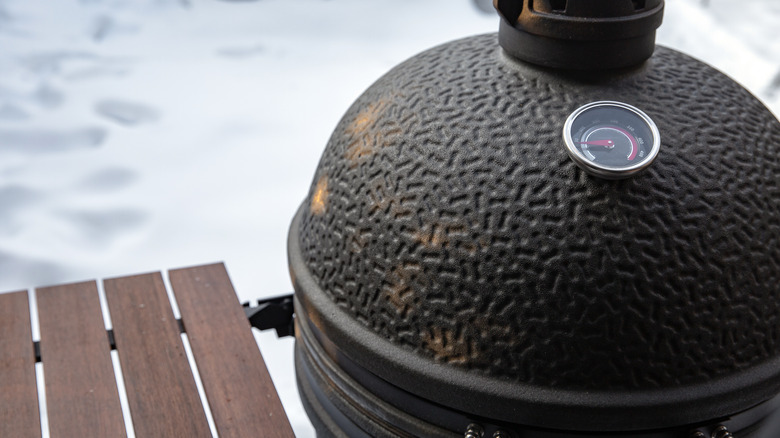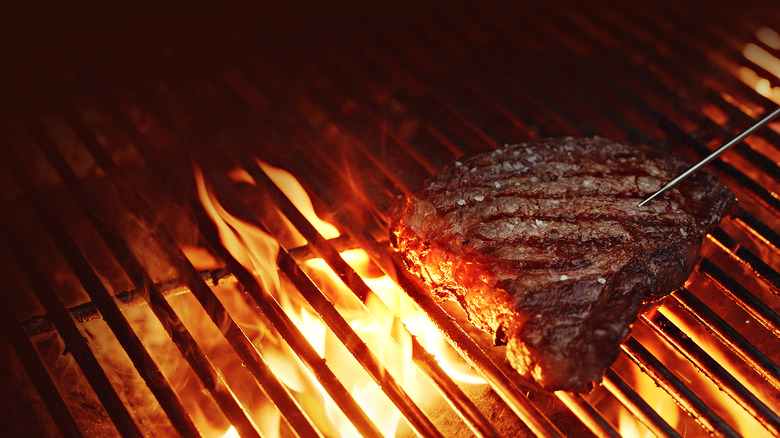What You Need To Consider Before Grilling Steak In Cold Weather
As the cold seasons settle in, many folks find it increasingly challenging to cook their favorite meals. Winter grilling can be a struggle, even when using charcoal. The cold weather can make it feel like the grill barely has enough heat, especially in higher latitudes where the temperatures can drop to biting, sub-zero levels. So, if you want to whip up grilled steaks for your family in the winter, it's essential to plan ahead rather than just tossing your cuts on the grill and hoping for the best.
In colder temperatures, the thickness of your steak is a critical factor to consider. While thick cuts are often preferred for grilling, they can be tricky to cook through in the cold, as the grill may struggle to maintain the consistent high heat necessary to cook the meat all the way through. So, even though thinner cuts may not be your usual choice, they're a better bet for winter grilling.
Still craving a thick New York strip steak despite the chilly weather? Luckily, there's a solution: You can swap out your grill's standard grate and replace it with cast iron cooking grates. Unlike aluminum or stainless steel grates, cast iron heats up quickly and retains heat exceptionally well. This means you'll be able to get your grill up to temperature (and keep it there) as your steak cooks. Plus, the cast iron grates will give your meat those beautiful sear marks that everyone loves.
Extra tips for grilling steak in cold weather
Cold weather can make your grill warm up more slowly, so it'll be smart to plan ahead. Be sure to set the grill up and let it preheat for a solid 15-30 minutes before you put your steak on the grates. If you can, use a thermometer to check the grate temperature, too. The ideal cooking temperature for steak falls between 450° Fahrenheit and 500° Fahrenheit.
While your food is cooking, do your best to trap the heat and keep the cold air out. This means closing the grill lid whenever you can. Every time you open the grill, cold air rushes in, and your grill has to work harder to heat up and maintain a good temperature again. So, unless you absolutely have to, keep that lid closed. To help with this, we highly recommend getting a thermometer with leave-in probes. This way, you can check your meat's doneness without opening the lid.
If you often find yourself grilling in cold weather, you might want to invest in a grill designed for the job. Some grills are made to handle cold weather, with thicker metal construction, better insulation, and even windbreaks to protect the grates and food from being battered by the wind. These features will make your cold-weather grilling sessions far less of a headache the next time around.

